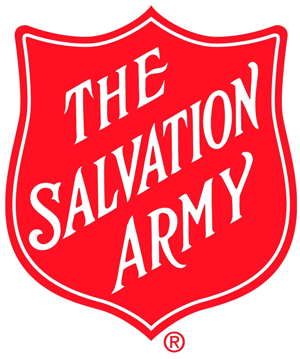Salvation Army marches ahead with Kofax

The Australian Eastern territory of The Salvation Army has more than 450 different service sites/centres and each one could have as few as two employees or as many as several hundred. Tax invoices were sent directly to the site that ordered the goods, where they were manually approved, then handed off for further manual handling.
According to Norris L. Dudgeon, Shared Services Manager, “Back in July 2006, we were transacting with more than 50,000 suppliers and processing approximately 20,000 tax invoices per month. As you can imagine, with those kinds of volumes, we had a significant amount of paper to file each month.”
When a tax invoice arrived at a Salvation Army site, an approval slip was completed for each one that included an approval signature and a 15-digit code: the first four digits identified the site, the next six digits identified the type of program, and the last five digits represented the natural accounting general ledger.
Once the invoice was approved, it was mailed to the Shared Services office at headquarters. There, 14-15 data entry processors would manually key in data from these documents for eight hours every day. Another full-time employee was dedicated to filing all of the documents by center every month. Because Australian tax law requires documentation be retained for seven years, there were storage and archival problems that led to the requirement to pay for external storage.
“We were dealing with such an information explosion in paper form, we knew we had to make a strategic growth investment to become as automated, paperless and efficient as possible,” said Dudgeon. As part of The Salvation Army’s due diligence, he sought the expertise of Xcellerate IT, a leading provider of business process automation solutions in Australia and also a Kofax Platinum Partner.
Dudgeon and his team identified the following key criteria for its new automated capture solution:
• Faster Processing Manual data entry of a quarter million invoices a year is a people- and time-intensive undertaking. This needed to be dramatically streamlined.
• Better Accuracy From neatly typed invoices from global vendors to hand-written invoices from the local butcher, the accuracy of invoice data was paramount.
• Lower Costs By eliminating physical storage and streamlining other costs, The Salvation Army could put more of its resources into actual aid vs. the administration of aid.
• Simple Integration The Salvation Army uses Finance 1. Ensuring simple integration with existing infrastructure was a key requirement.
“We considered many vendors and extensively evaluated several different solutions,” Dudgeon said. “While some solution providers were clearly in ‘selling’ vs. ‘helping’ mode, we had a high degree of confidence in Xcellerate IT from the start. They really listened to and understood our needs. And they invested their time and expertise to show us exactly why and how Kofax Capture™ was clearly the best solution for us.”
In March 2007, The Salvation Army made the decision to implement Kofax Capture to automate its information driven processes. Kofax Capture scans documents and forms, extracts index data for retrieval purposes and delivers the images and associated data to a variety of repositories and applications. By October that year the solution went live.
Today, The Australian Eastern territory of The Salvation Army has completely automated its invoice processing and the charity is saving a half million dollars per year as a result.
The way the organisation processes invoices has changed significantly.
“We still have some segregation of duty,” said Dudgeon. “Commercial operations can use the purchase order system within Finance 1. Smaller operations can still rely on honorary treasurers to buy things from local suppliers. But now, when the invoices arrive at Shared Services headquarters, they are imaged, scanned and instantly accessible. So when a supplier rings the help desk to check on an invoice, they can get a real-time disposition.”
The vastly increased productivity of the solution only requires half the data entry than it did without the solution, and the need for off-site storage has been eliminated.
“With our former system, if a state accountant wanted to see what a site manager had done, he would have to write our head office and we’d photocopy or scan a document and mail or email it to him,” Dudgeon continued. This process could often take a week or more.
“With Kofax, there is no time lapse. He/she can sit in their office and have instantaneous access to documentation for which he/ she is responsible. This is a fantastic innovation. We’ve been a Kofax customer for five years and the product is brilliant, easy to use and incredibly accurate.”
